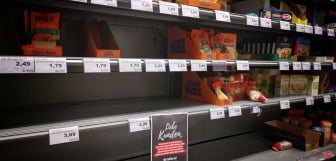How to Minimise Out of Stocks in Your Store
Out of stocks are frustrating for both the retailer and the customer. In this article we will identify some of the main causes in an effort to minimise out of stocks in your store.
At best, out of stocks lead to a missed selling opportunity, and at worst, result in a loss of repeat business. But despite this, many retailers continue to operate with gaps in their inventory in order to minimise cash flow tied up in stock. The assumption is that if customers can’t find the particular items they are after, they will buy a suitable substitute. The risk, however, is that customers will often simply visit a competitor to get what they need.
UPDATE: The COVID-19 global pandemic has caused higher levels of out of stocks in most retail stores. This has been largely caused by the buying frenzy that came from quarantining processes, warehousing and logistics issues, and global import trade that has either been stopped or slowed. The flow-on from the effects of COVID-19 have had a huge impact both on supply and demand leading to some stock-outs to be completely unavoidable.
So while out of stocks can’t always be avoided, especially when suppliers are completely out of stock, we have identified a few solutions that can help reduce the risk of your shelves being empty.
Ensure you have accurate stock data
Having accurate inventory data is vital for retail success, yet this is an aspect of your business that can be hard to get on top of for a variety of reasons. These can be issues like physical variances on orders receivable, damaged stock, theft, returns or lost items. Without audits, these can lead to discrepancies between your physical stock numbers and the numbers you have in your system.
This inaccurate data can lead to over-ordering, or under ordering (if you rely on your on-screen numbers), and can impact your cash flow and finances if you purchase the wrong products.
Use your POS to manage your inventory levels
If you’re seeking to avoid discrepancies between your physical and on-screen figures then implementing a proper inventory count is the number one thing to do.
When implemented correctly with a Point of Sale system, stock on hand quantities update as products are sold and received. Using your Point of Sale system to effectively track and manage stock levels can help you save time and reduce mistakes with ordering.
TIP: Check out some additional reasons to implementing stock control in your business.
Identifying accurate demand forecasting
Another way to reduce out of stocks is by identifying and using accurate demand forecasting. By reviewing historical sales data, you can approximate a forecast of the demand for products and ensure your stock levels will accommodate.
This is especially beneficial when it comes to ordering for the busy times of the year like Easter and Christmas. These orders are generally done way in advance and are often one-offs, so ordering too little can lead to selling out too early.
Reviewing historical data on fast-selling items can also help to identify selling patterns and trends for particular items. This is especially beneficial for seasonal products that will sell at higher volumes during certain times of the year.
Set reorder points
Managing the balance between overstocking and under stocking can be a challenge.
Typically, if stock levels are too low, then you run the risk of out of stocks. But if you hold too much, it can drastically impact your cash flow, as precious funds are tied up in stock that may take a long time to sell. Fortunately, you can use your inventory management software to help prevent this.
Once you have established your initial stock counts, and reviewed historical data, you’ll be able to track inventory levels and quickly identify low stock on hand quantities which would need to be reordered.
TIP: Manually set reorder points within your Epos Now system so you get an alert when that item reaches its physical minimum on-hand quantity.
Allow for stock lead time
Re-ordering your stock when it’s flying off the shelf is the general rule, but you also have to make sure you’re reaching the reordering point before your shelf is bare.
This means allowing for a product's lead time. This is the delay between the time your purchase order is submitted and the actual delivery date of the order. Try to establish short lead times, but if that’s not possible, simply ensure that the time is accounted for when completing stock orders.
Alongside allowing for stock lead times, knowing order deadlines is crucial for determining the ideal reorder point. Some vendors may be local and have minimal time from order to delivery, but others could have a long lead time as they could be interstate or even international.
Utilise Safety Stock
A further option is to utilise safety stock levels.
Since out of stocks can stem from a range of factors, including fluctuating customer demand, popularity trends, variable leads times and inaccurate forecasting, it may be beneficial to maintain a safety stock level.
Safety stock is simply extra inventory that is carried purely to prevent out of stocks. The level needed will depend entirely on your business and the stock's popularity. This level can be established by increasing order quantity higher than forecasts predict. Alternatively, it can be based on sales percentages.
Although this means your business is sitting on a higher percentage of stock, this buffer can support in preventing gaps in your inventory appearing.
Epos Now provides hardware and software that can improve your inventory management, provide in-depth sales reporting, improve your customer service, and so much more.
Speak with a consultant today to see what Epos Now can do for you.
